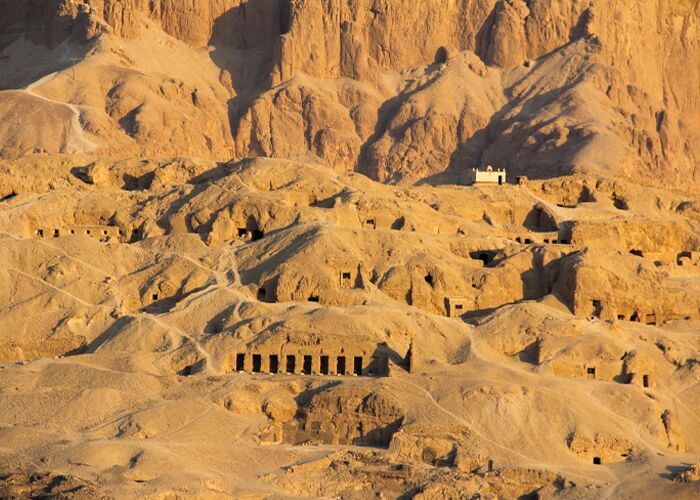Valley of the Nobles
Not only are the temples in Luxor interesting, but so are places like the Valley of the Nobles. The Egyptians thought that the dead would live forever after they died, so they built tombs for them. The west bank of the Nile is where most of Luxor’s tombs are.
There are two kinds of tombs in Luxor: Royal Tombs and Private Tombs. The Valley of the Kings is an example of a Royal Tomb (where nobles or those close to the kings are buried). In the Valley of the Nobles, this is one of the places where nobles are buried.
The History of the Valley of the Nobles
Only kings thought that they would live forever, so they were buried with their treasures, food, and everything else they would need in the life after death. Since the Middle Empire, nobles have thought that life goes on forever. In the New Empire, nobles were allowed to build their own tombs and make them look like kings’.
The Valley of the Kings is on the west side of the River Nile, west of Luxor. There were the bodies of ministers, priests, army soldiers, and officials from the king’s palace. The 17th, 19th, and 20th dynasties had most of the nobles.
How the Valley of the Nobles Was Built
There are more than 400 tombs carved into the rock in the Valley of the Nobles. On the front of the tombs, the title and name of the person whose tomb it is are written. Funerary cones are sometimes put at the entrance of the tomb. On the walls of the tombs are writings about the nobleman’s daily life and scenes from their funerals. There are six cemeteries in the Valley.
- Dra Abu El-Naga, where the tombs of high officials from the XVIIth and XIXth dynasties are located.
- El-Joja, where the tombs of the Old Empire and the XVII, XIX, and XX dynasties are located.
- El-Assasif: the tombs of the New Empire and others from the Third Intermediate Period.
- El-Tarif: the tombs from the end of the Second Intermediate Period and the start of the Middle Empire.
- Qurnet Murai is where the nobles of the New Empire are buried.
- Sheikh Abd El-Qurna; tombs of nobles from the XVIII Dynasty.
The Most Famous Tombs
- The Tomb of Rejmira (TT100); he was the vizier of the XVIII Dynasty, of King Thutmosis III and Amenhotep II. It is well-known for the artwork on its walls, which shows Rejmira’s work and hobbies, such as farming, hunting, funerals, and other crafts.
- The Tomb of Najt (TT 52); he was a priest, scribe, and astronomer of Amon during the reign of King Tutmosis IV in the XVIII Dynasty. The paintings on his tomb are very beautiful and show scenes from his life.
- The Tomb of Menna (TT69); he was a scribe of the Lord’s fields of the God of High and Low Egypt during the reigns of Thutmosis IV and Amenhotep III in the 18th Dynasty. His tomb was beautifully made. On the walls, there are drawings of Menna, his wife, and their children as they were.
A trip to the Valley of the Nobles
Don’t pass up the chance to go to the Valley of the Nobles on a trip set up by Egypt via travel. You can also take a private tour guide with you to see the sights in Luxor and Aswan. Check out our Egypt tours or Nile cruise packages right now to book a magical trip.

